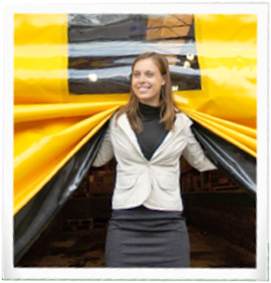 Roll up doors maintenance has long been a contention all around the world between companies and door manufacturers. Companies want a sufficient system for warehouse and factory operations for employees and vehicle traffic. Yet this system comes at a cost if maintenance issues are not addressed. Door manufacturers are using the latest technologies to build better roll up door systems. However, they have not entirely focused their efforts in offering programs designed to keep these doors running efficiently on a long-term basis while addressing health and safety in the workplace.
Roll up doors maintenance has long been a contention all around the world between companies and door manufacturers. Companies want a sufficient system for warehouse and factory operations for employees and vehicle traffic. Yet this system comes at a cost if maintenance issues are not addressed. Door manufacturers are using the latest technologies to build better roll up door systems. However, they have not entirely focused their efforts in offering programs designed to keep these doors running efficiently on a long-term basis while addressing health and safety in the workplace.
Addressing safety and maintenance
Companies and manufacturers are realizing the costly consequences when doors break down. As a demand for service support rises, roll up door manufacturers are recognizing three main reasons for this trend:
- complexity of newer equipment
- changes to legislation
- the sector’s commitment to improving operational safety
Health and safety are now being taken very seriously. With workplace accidents on the rise caused by roll up doors, companies are seeking comprehensive training for their staff to reduce liabilities. This focus on roll up door safety comes at a time when manufacturer-backed preventative maintenance programmes for forklifts have become standard practice. So it comes as no surprise that the same model is now being applied to roll up doors — particularly on the loading bay where they are often integrated with truck safety systems both within the loading bay and for delivery trucks backed up to the docks.
Addressing door malfunctions
There are a host of reasons why doors will malfunction or be damaged. Malfunctioning sensors, disconnected or broken control cables, failed auto reverse functions, and impact from delivery trucks and forklifts are only a few issues affecting the function of industrial doors.
Companies should adopt a two-pronged approach in addressing these issues that lead to significant costs in terms of disruption to production processes and/or delays to shipments. 1) Preventative maintenance that will minimize the likelihood of door failure, and 2) Improved safety culture focused on successfully training workers to prevent truck/door collisions rather than dealing with accidents after the event, even if the doors are the knock-out types.
Product innovation and safety training is paramount
The loading bay sector has rigorously sought new product innovations to reduce door damage and employee injuries. Product additions include photo electric cells on doors to prevent collisions with employees along with forklift-fitted sensors and alarms so trucks do not go through the wrong-sized doors.
Although these safety features are a welcome sight to have, they can only go so far. Therefore, a robust safety/training regime must be in place, especially during the seasonal rush of the holidays. Temporary staff who are only taken on to handle the holiday customer supply and demand do not have the awareness of safety protocols, resulting in more serious warehouse accidents involving industrial doors. Therefore, it is paramount for even temporary staff to become adequately trained.
Over the years, various kinds of doors have been developed to cut operational costs for several industries, including the food and pharmaceutical premises.
DYNACO, a very popular choice for roll up doors in warehouses, differentiate themselves by offering roll up doors with reinforced PVC vinyl curtain and no rigid components making it safe for workers and products. Their technology also possesses superior crash forgiveness. If, on impact, the door is dislodged from its side guides, the door automatically re-inserts itself with the push of a button. No costly downtime, no service call needed. A great combination of safety and low maintenance cost!
See how Dynaco doors work:

